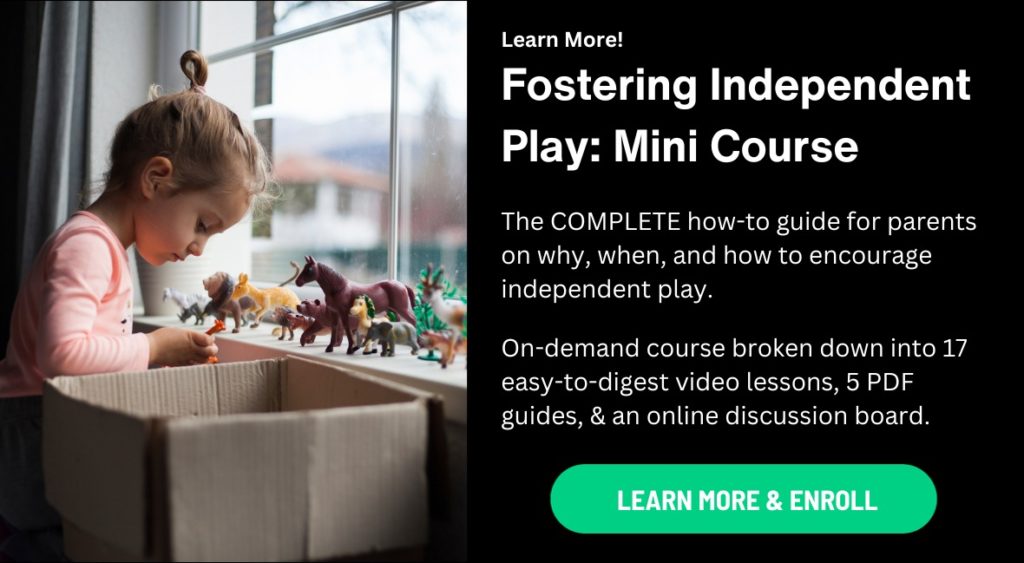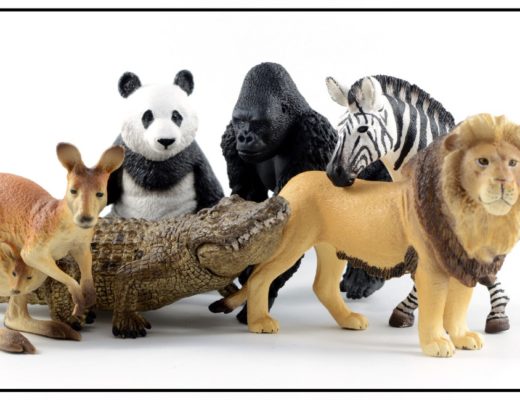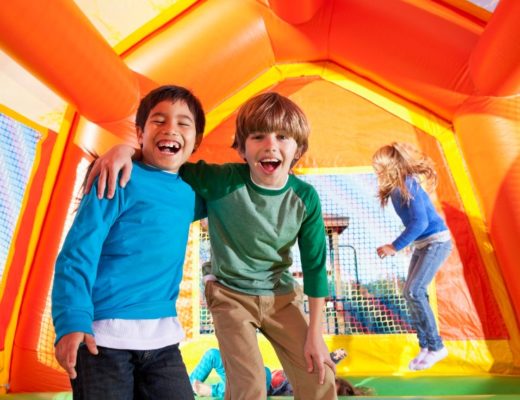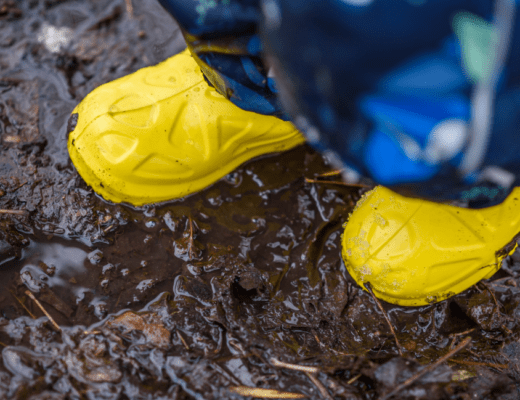As soon as something is branded as a kids’ item, it often goes way up in price, especially as it gains popularity. The Nugget Comfort Couch is no exception.
What is the Nugget Comfort Couch?
The Nugget Comfort Couch is a play couch for kids that has become wildly popular.
But what is a play couch?
Imagine a series of couch cushions that can all be moved, rearranged, climbed on, and lounged on by kids. It’s a great way to save your couch cushions and provides hours of fun, entertainment, and active play.
As an open-ended toy – meaning it’s not overly specific – there are endless ways that kids can use the Nugget. These ways keep them engaged and build their creativity, imagination, and problem-solving skills.
It can become a cozy reading nook, a fort, a slide, a soft play area, a pirate ship, a slide, an obstacle course, and whatever else kids can think up!
It comes in a variety of attractive colors that are much less offensive than the typical bright primary colors of kids’ toys. And the cover is washable! It checks all the boxes.
We get commissions for purchases made through links in this post. As an Amazon Associate, we earn from qualifying purchases.

Cons of the Nugget
But the Nugget can be expensive and requires quite a bit of dedicated space. Some families buy multiple sets so their kids can have lots of pieces to build with, but that can add up to over a $1,000 in cushions.
So, what to do if you’re not looking to buy a Nugget?
Free Alternative to the Nugget Comfort Couch
In comes the cardboard box!

It doesn’t feel as fancy or as much like you’re getting your kid a “toy,” but as educators, we’re here to tell you that we recommend cardboard boxes to every family.
A box can be moved, rearranged, climbed on, and lounged in like the Nugget for hours of open-ended play!
Remember: kids don’t need toys – toy companies need kids. Kids need to play and are often just as happy playing with everyday objects
We have yet to meet a kid who didn’t get hours of enjoyment out of a cardboard box.
Pros of a cardboard box
Unlike the Nugget Comfort Couch, cardboard boxes are free! And you probably already have some lying around somewhere.
Boxes come in various sizes and can be used indoors and outdoors, making for a great free outdoor activity for kids. Even a small apartment space can accommodate a cardboard box for play.

Boxes are open-ended, making it so that kids can play with them in countless ways. A box can be a train, a castle, a dog bed, a drum, a boat, a nest, or a lounging spot, all in one day.
And when your kids are done playing with it, recycle the box and get a new one later. We love that kids can trash the box and get it dirty – no need for us to step in to preserve an expensive toy. This allows kids to play independently and develop deep focus.
Other Great Benefits of a Cardboard Box
While it may not feel fancy, using a cardboard box instead of traditional toys offers several additional advantages:
- Cost-Effective: Cardboard boxes are often readily available and inexpensive, making them an affordable option for parents and caregivers.
- Sustainability: Cardboard is biodegradable and recyclable, making it an environmentally friendly choice compared to many plastic toys that contribute to pollution.
- Customization: Unlike traditional toys, which come with predefined functions and features, a cardboard box can be customized to suit a child’s interests and creativity. It can be painted, cut, decorated, and transformed in countless ways.
- Minimalistic Play: Cardboard boxes encourage kids to engage in minimalistic play, which emphasizes the importance of imagination and creativity over the accumulation of commercial toys.
- Durability and Safety: Cardboard is generally safe for kids to play with, as it doesn’t contain small parts that could be choking hazards. It’s also durable enough to withstand rough play but not so hard that it could cause injury.
- Versatility: A cardboard box can be used for a wide variety of play activities. It can serve as a prop in pretend play, a storage container for other toys, or even a canvas for artistic expression.
- Physical Activity: Large cardboard boxes can encourage physical activity as kids crawl in and out, push, pull, and climb on them. This kind of play promotes physical development and coordination.
- Fosters Independence: Allowing kids to design and create their own play structures with cardboard boxes encourages independence and self-directed play.
- Encourages Problem-Solving: Kids need to think critically and solve problems when transforming a cardboard box into something new. This process develops their cognitive and problem-solving skills.
How to play with a cardboard box
Simply leave out some boxes and see the fun things your kids do with them. Often kids need less prompting and intervention than adults would think. Give them the space to be creative and play with the box how ever they would like.
Thats it.
We love stepping back and seeing what kids do with a box when they simply discover one set out in their play space with no suggestions about how to use it. The box often becomes many things over the course of play.



Our kids’ favorite ways to use cardboard boxes:
- Add some pillows and make a comfy lounge spot. It becomes its own “couch” and is a great place for reading.
- Connect lots of boxes and make a giant box fort. Add a roll of blue painter’s tape and set your kids loose.
- Color the box with markers and crayons.
- Place some boxes on their sides to make a box tunnel.
- Push the box around the house as a stuffed animal “stroller.”
- Stack boxes to make a box tower.
- Climb in and out of boxes
- Eat snacks in the box.
- Sit in the box with friends.
- Paint boxes.
- Cover the box in a sheet or blanket to make a fort or cave.
- Sit in the box outside on the lawn.
Notice the simplicity of each of these ideas. They leave room for kids to play and imagine any pretend scenarios that they would like. Often, we can be doing less with our kids, all while deepening their play.



Things to avoid
- Avoid making overly elaborate or specific things for your kids, like a fully detailed box castle or costume.
Often as adults, we want things to be “cute” and to look a certain way. What we call kids “crafts” are just adult DIY projects. But this doesn’t allow kids to be involved in the creative process or to use their own imaginations and it takes away some of the open-ended qualities of the box. Kids are actually going to play less with these things.
The simple kids book Not A Box by Antoinette Portis is a great reminder for adults that a box can be many things whether it truly looks like those things or not. It’s often us as adults that have the limited imagination and a literal view of the world.
Allow kids to color, paint, and cut the boxes with you or even by themselves. Yes, they might end up mixing all the paints into some sort of mucky brown and it wouldn’t look like the pretty princess castle that you had in mind but what’s really wrong with that? It’s less work for you and it’s hours of fun for them. - Avoid stepping in and over-directing kids’ play. Letting your kids play on their own doesn’t make you a bad parent. In fact, it’s quite the opposite!
Giving kids unstructured time to play forces them to direct their own time and make choices about what to do. Boredom drives innovation. They learn how to entertain themselves instead of expecting entertainment from outside sources like you or the TV.
If your kids often complain of being bored, it might be that they are used to you running around and finding things for the to do. Allow for some boredom and see the things that they come up with!

Tips
For messy box painting activities, simply take the boxes outside. This way, kids can get paint all over the place, and you’re not worried about ruining any of the furniture in the house. This will keep you from interrupting their play, and you’ll have to say “No” a whole bunch less often.
Leave the box outside to dry and hose kids off or head straight into the bath.
What age kids can play with a cardboard box?
Cardboard boxes are for kids of all ages! Babies can put toys in and out of the box, explore climbing in and out of the box, and practice walking by pushing the box all through the house like a walker.
Older kids can build elaborate forts or a cozy nook. The possibilities are limitless!


So, before you rush off to buy the Nugget Comfort Couch or the new hot thing for your kids, consider open-ended everyday objects like the cardboard box and see how it changes your kids’ play.






No Comments